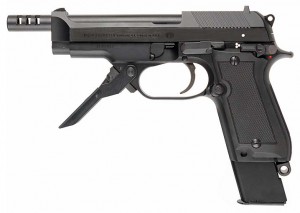
There are handguns. There are submachineguns. In between those two classifications: the machine pistol. In theory, it’s a great concept: maximum firepower in minimum size. In practice . . .
The machine pistol was born early in the 20th century. The concept usually started with a self-loading (semi-automatic) pistol converted to fire bursts or full auto. Manufacturers often made provisions to increase ammo capacity. They often added a shoulder stock or some other method of stabilizing the machine pistol.
Steyr made a fully-automatic version of their M1912 service pistol. Since this was a fixed-magazine design fed by stripper clips, they extended the built-in magazine to provide more ammunition capacity. Not ideal, but it apparently worked—to some degree.
Another early example: the Mauser C96 “Broomhandle”. The provision for a shoulder stock made the Mauser a natural choice to convert to full-auto. Two Spanish companies built the first full-auto versions of the Broomhandle in the late 1920s. They also converted the design to use a 20-round detachable magazine. Mauser developed their own version in 1930, called the M1932 (or M712 in WW2 service).
Beretta adapted their M1951 9mm pistol to full-auto and added a folding front grip and a 10-round (instead of eight) magazine. The result was the M951R. It was not very successful, due to low ammo capacity and controllability issues. But it led to later, more successful designs (see below).
Heckler & Koch debuted their version of a machine pistol in 1970, the VP70. The military version (VP70M) could fire three-round bursts (at a cyclic rate of 2200 rounds-per-minute!) when the shoulder stock was attached (which might disqualify it from being a true “machine pistol”). The 18-round magazine gave enough capacity to make this a potentially useful feature, and the very high cyclic rate made the bursts controllable. I have heard different stories about the trigger: most shooters say it is a long heavy trigger but a few have described it as OK. Despite being a viable design on paper, the VP70M has not seen widespread use.
Beretta took the lessons they learned with the M951R and created a new, refined machine pistol out of their full-size Model 92 pistol: the Beretta 93R. They added a longer, compensated barrel and a 20-round magazine. The stock is optional; the 93R will fire 3-round bursts with or without the stock attached. The upward-folding, angled forward grip for the weak hand adds to controllability (notice the longer trigger-guard; the weak hand’s thumb goes through the trigger guard while the fingers wrap around the angled grip to prevent your weak hand from ending up in front of the barrel).
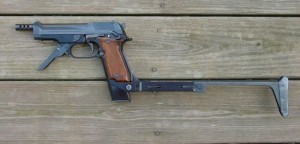
The Soviets made a machine pistol using the Makarov (9x18mm) cartridge, called the Stechkin APS. It sort of looks like a Makarov on steroids, and should have the stock attached to fire in full auto mode.
CZ created a full-auto version of the CZ75 pistol. Rather than add a handgrip, they provided an attachment point to connect a spare magazine to serve as a grip. I wonder how wise it is to leave the feed lips of a magazine exposed to potential damage.
And then we come to the holy grail of machine pistols: the Glock 18. No bursts here; full-auto capability with standard or compensated versions available. No stock needed, it will rock and roll right from a standard holster. Uses the standard 17-round or optional 33-round magazines (yes, the ones made famous by loony Jared Loughner).
Despite the many designs of machine pistols, this type of weapon has never enjoyed widespread success. They are not as accurate/controllable as a traditional submachinegun, and they require a much higher level of training to safely employ. Most militaries and police forces find that their training time/money are better spent on a traditional submachinegun or a PDW.
Bodyguards are a common employer of machine pistols; the need to maintain a discreet appearance is paramount, and the machine pistol enables a more intimidating weapon than a pistol to be effectively concealed. I wonder how effectively they can be employed one-handed, since their other hand might be occupied shepherding their “principal”. Collateral damage would be a concern.
All things considered, I believe the Beretta 93R is the best option in this class of weapons. No stock needed (so it can be concealed), bursts (rather than full-auto) to keep it controllable, and a pretty good system for letting the weak hand get a solid grip on the gun. I am sure that you could attach a foregrip to the rail on the front of the Glock 18, which would make it easier to control. But you might lose concealability/holsterability.
Yes, there are some very small submachineguns. The H&K MP5K, Ingram MAC-10/11, Micro Uzi and Vz61 Skorpion for example. While small, they started life as submachineguns, not pistols. And most are not “holsterable”.
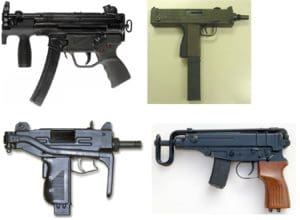
UPDATE: Rob pointed out that there have been full-auto conversions of 1911s.
[Click on over to www.yankeegunnuts.com for more from our valued cross-poster.]

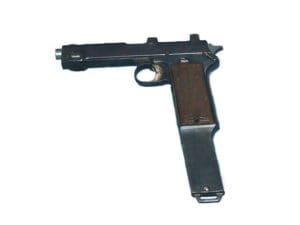
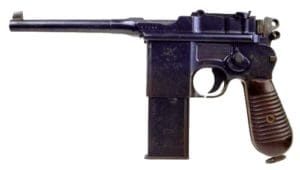
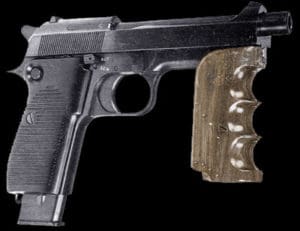
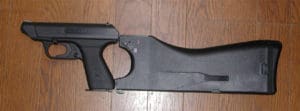
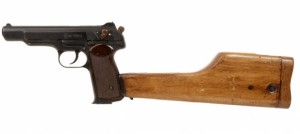
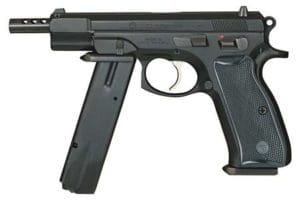
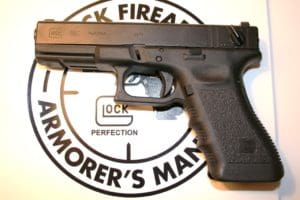



Man I have had a crush on the 93R for as long as I can remember. I would love to get my hands on one. I honestly thought the CZ75 auto was fiction made for Black Ops, interesting to see that it actually exists.
What is legel for me to buy in the semi automatic ,& machine pistol….
I love to shoot guns & protect my home…
Terrific write up of an interesting and little known subject. I had seen the 93R and the Glock 18 before, but this was the first time I had ever heard of the CZ-75 machine pistols. Fascinating!
I was hoping you would make mention of the full auto conversions of the 1911 that were made during the Prohibition era. Dillinger had one, although I don’t know that he ever used it. His seems to have been in .38 Super. Here is an article from the Firearms’s Blog about them:
http://www.thefirearmblog.com/blog/2010/03/29/colt-m1911-machine-pistols/
Rob
Good point, Rob.
Machine Pistols fun shoot but hard control one reasons they have replace machine guns. Glock 18 has such high rate fire that easy shoot all round from 33 round mag before you knew where they had all gone.
You know, having fired the Beretta, the CZ, lots of Glock 18s, the Stechkin (courtesy Of the estimable John Ross), and all the little submachine guns, I’m going to say the full auto CZ-75 is hands down the most controllable of the whole bunch. The trigger on the CZ is so good and so easy to one-shot versus burst that one could shoot an IPSC match with one. GLOCK 18s get easier to run as you work with them. The Skorpion is my first choice to mount ban assault on a phone booth.
Michael B
The trigger on the VP70 (civilian version) was quite long and heavy, at least on the one I used. Not horrible but also not good.
NukemJim
Wasn’t one reason for pre-WW2 popularity that the Chinese had some restriction against submachine guns but allowed full auto pistols? Thus artificially creating the market for such?
I had a internal part wear enough on one of my 1911’s that it would go full auto. Impossible to control one handed, and I didn’t want my weak hand anywhere near the barrel. Fun, but highly impractical. I could possibly see the Mauser Broomhandle as a fun toy.
“May your enemies always be on full automatic.”
I had a 1911 run away on me once because of an internal part failure. It slammed me on the forehead. The rear sight cut a nasty gash. However, I got a bandage on the cut, got my spare gun, and finished the match. Well out of the money, of course, because of the total time I took.
The Glock 18 has been my wet dream since longer than I care to mention. I have not found a way to make it mine yet but reading this article it confirms what I had thought all along. Machine pistols do not get any better.
Depending on the difficulty of obtaining a Class 3 license I may legally convert a 17 as the 18 cannot be bought under the current reading of the law. I just do not know if the trouble is worth it.
Nothing deals with liberals quicker than a Glock 18C
I have fun with, cause I found exactly what I used to be looking
for. You’ve ended my four day lengthy hunt! God Bless you man. Have a nice day.
Bye